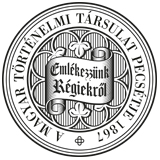Századok – 1999
Tanulmányok - Hermann Róbert: Egy „végzetes” döntés születése. Magyar haditervek Gödöllőtől Komáromig 1849. április 7–29. II/253
312 HERMANN ROBERT sources. The author analyzes the surviving documents including those of the maneouvres and points out their contradictions. He thinks that the primary political aim of the siege must have been to ensure diplomatic recognition abroad, as Kossuth hoped after the Independence Manifesto had been accepted. His statements in March and April, 1849 testify to this fact. The author maintains that Kossuth considered the liberation of the country's capital city as the primary aim of the Spring Campaign. The military reasons must have been that the Hungarian army was exhaused, there were problems with the ammunition supply, and uncertainty as to the intentions of the enemy. Besides, the recapture of Buda would have cleared the way for creating a clear-cut situation in the central part of the country. Despite its serious defeats, the Austrian army was not demoralized and its troops defending Vienna were twice as numerous as those of Görgei at the end of the Spring Campaign. When the capital was evacuated Jellai's corps was sent southward, so the Hungarian army could not leave Buda unprotected. Due to the protracted siege, Kossuth later criticized the decision for it and after the defeat of the war of independence he even denied having been a party to it. However, the recapture of Buda was the only reasonable objective for a military operation at the end of the Spring Campaign. The returns of strength at the end of the study convincigly demonstrate this statement. Paradoxically, due to the subsequent witch-hunt, the man responsible for the victory has not been found ever since.
